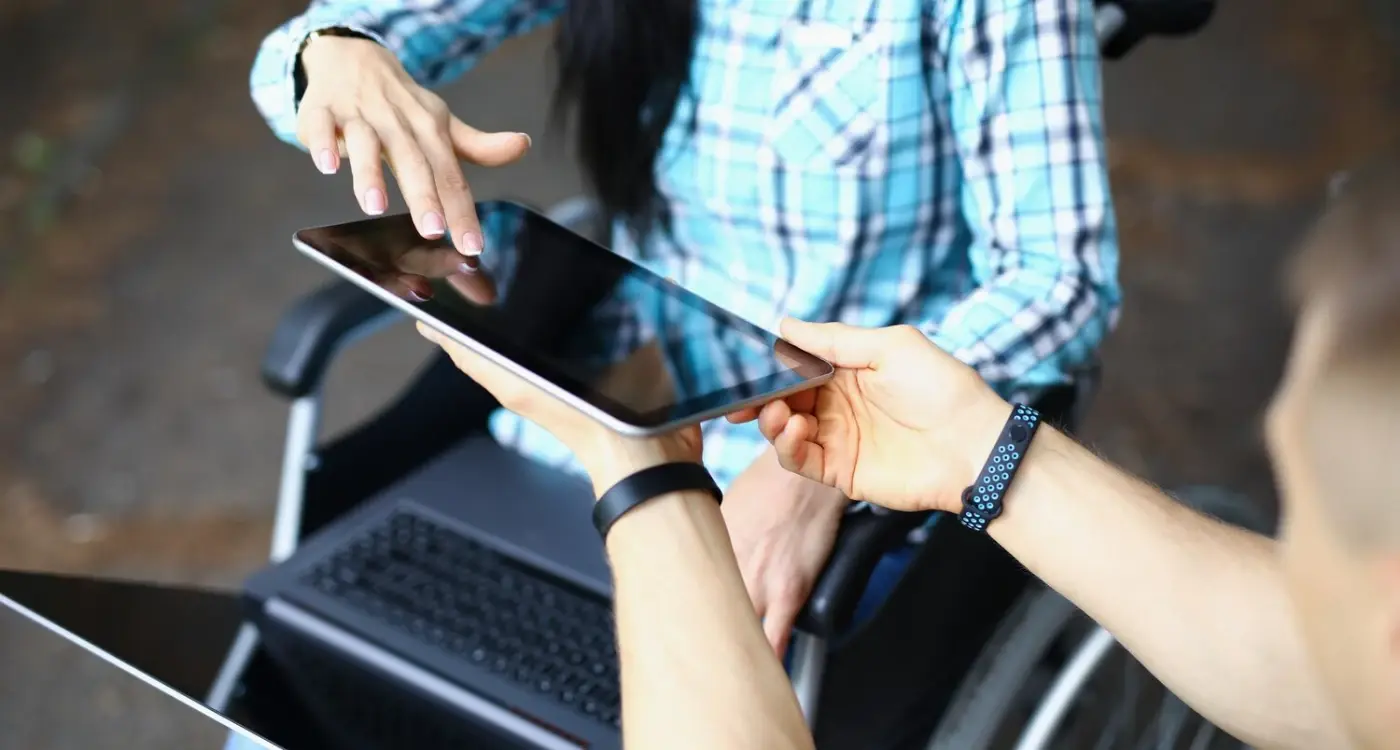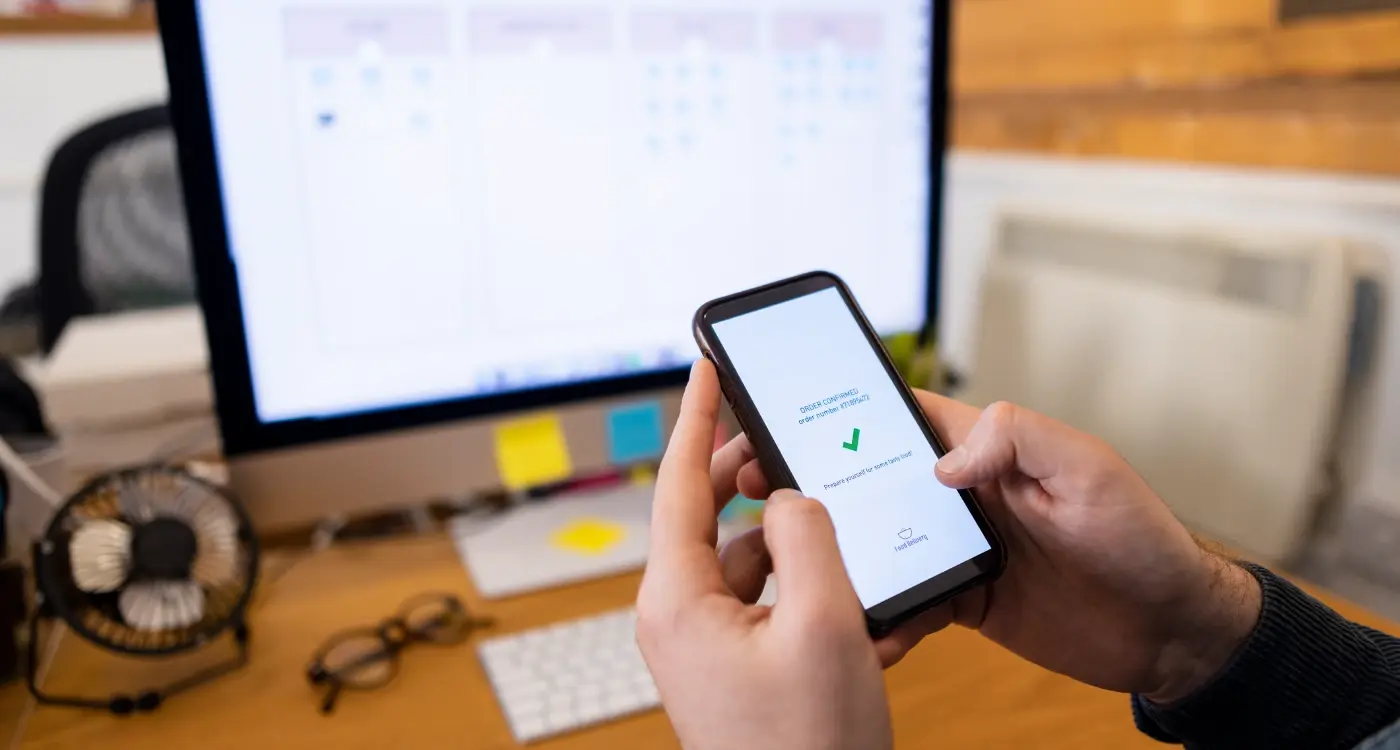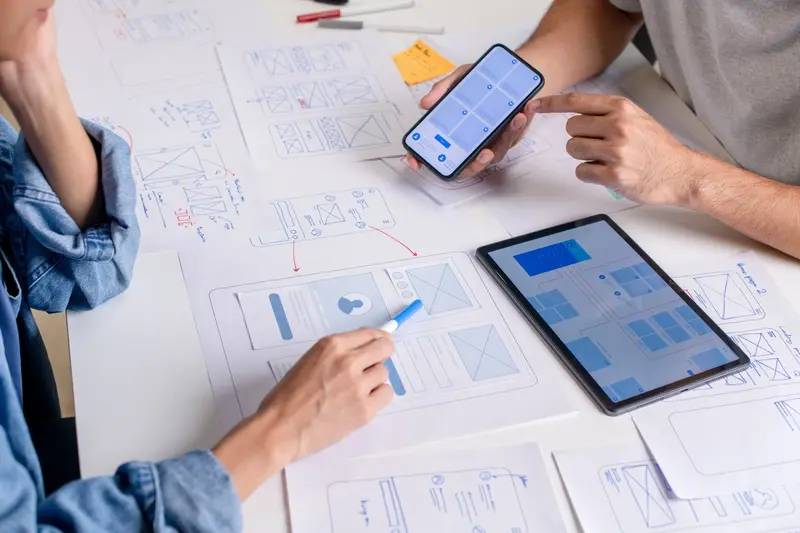Why Do Remote User Tests Give Different Results Than In-Person?
Remote user testing produces different results than in-person sessions in roughly 40% of studies according to recent UX research data. That's a pretty significant difference when you're making decisions about your app's design and functionality based on these findings.
I've been running user tests for mobile apps for years now, and honestly? The difference between what people do when they're sitting in our office versus what they do at home on their sofa is sometimes night and day. It's not that one method is better than the other—they're just different beasts entirely.
The thing is, most people don't realise how much the testing environment affects user behaviour. When someone's using your app while they're comfortable at home, multitasking with Netflix in the background and their cat climbing over them, that's completely different to when they're in a sterile testing room with researchers watching their every move. Both scenarios give you valuable insights, but they're insights about different things.
The environment doesn't just change how users behave—it changes what problems they notice, how they solve them, and even whether they bother trying to solve them at all
What makes this topic particularly interesting for mobile app development is that our apps live in people's real environments. They're used on crowded trains, during boring meetings, while cooking dinner, or when someone's half-asleep scrolling through their phone. Understanding how different research methods capture—or miss—these real-world usage patterns can make or break your app's success in the marketplace.
Understanding Remote vs In-Person Testing
Right, let's get straight to the heart of this. Remote testing and in-person testing are like two different ways of watching how people use your app—and honestly, they'll give you different results every single time. I've run hundreds of user tests over the years, and the data never lies: people behave differently when they're in their own environment versus sitting in a testing lab with someone watching them.
When you're doing remote testing, users are at home, probably in their pyjamas, with their cat wandering around and Netflix paused in the background. They're relaxed. They're using their own device, their own internet connection, and they're in a familiar space. This means you get to see how people actually use your app in the real world—interruptions, distractions and all.
In-person testing? That's a completely different beast. You've got someone sitting across from you in a sterile room, probably feeling a bit nervous, trying to be helpful and do what they think you want them to do. They're using an unfamiliar device, there are no distractions, and they know they're being watched. Sure, you get incredibly detailed observations and can ask follow-up questions immediately, but you're not seeing natural behaviour.
The key difference isn't just about convenience or cost—it's about context. Remote testing shows you what happens when your app meets real life; in-person testing shows you what happens when someone focuses entirely on your app without any external factors. Both have their place, but understanding why they produce different results is crucial for making sense of your data and knowing which method to use when.
The Psychology Behind Different Testing Environments
Here's something that genuinely fascinates me about user behaviour—people act completely differently when they're being watched versus when they're alone. It's not just about being nervous; it's much deeper than that. When someone's sitting in your office with you watching them use an app, their brain is constantly processing two things: the task you've given them and the social situation they're in.
Remote user testing removes what psychologists call "social desirability bias"—basically, people trying to look smart or capable in front of others. When users are at home, they're more likely to admit when something confuses them or when they can't find what they're looking for. I mean, there's no shame in looking a bit lost when nobody's physically there judging you, right?
But here's where it gets interesting—the comfort of being at home can also make people less focused. They might have the TV on in the background, their phone buzzing with notifications, or their cat demanding attention. This isn't necessarily a bad thing though; it's actually closer to how they'll use your app in real life.
Record both the screen and the user's face during remote sessions. You'll pick up on hesitation and confusion that they might not verbalise, even when they think nobody's watching.
Environmental Stress Factors
In-person testing creates what researchers call "cognitive load"—users are processing the unfamiliar environment while trying to complete your tasks. This can make simple tasks seem harder than they actually are, or conversely, make users push through problems they'd normally abandon because they feel obligated to succeed.
- Physical discomfort in unfamiliar spaces affects decision-making
- Time pressure feels more intense with someone watching
- Users second-guess their instincts more in formal settings
- Natural multitasking behaviour gets suppressed
The psychological state of your users during testing directly impacts the quality of feedback you'll receive, and understanding this helps you interpret your results more accurately. This is especially relevant when considering the psychology behind app success, as user behaviour under different conditions reveals crucial insights about long-term engagement.
Technical Factors That Shape User Behaviour
The technical environment plays a massive role in how users behave during testing—and honestly, its often the factor that gets overlooked the most. When someone's using their own device at home versus your carefully controlled testing lab, you're dealing with completely different technical realities that can dramatically change their behaviour.
Device performance is the big one here. In our lab, we typically use high-end devices with plenty of storage and processing power. But your users? They might be running your app on a three-year-old phone with 95% of its storage full and fifteen other apps running in the background. That lag they experience when navigating through your app—that's real user behaviour, not a testing flaw.
Network Conditions and Real-World Performance
Internet connectivity is another game-changer. Lab testing usually means reliable WiFi, but remote users are dealing with patchy 4G, crowded networks, or that dead zone in their kitchen where they always seem to end up using your app. I've seen apps that performed beautifully in controlled conditions completely fall apart when users hit a slow loading screen in the real world.
Then there's the distraction factor that comes with technical interruptions. Phone calls, notifications, low battery warnings—these aren't bugs in your remote testing, they're features of real user experience. When someone gets interrupted mid-task by a WhatsApp notification, their behaviour changes completely and often reveals critical patterns about app deletion reasons that controlled testing would never capture.
Key Technical Variables That Impact Results
- Device age, storage capacity, and processing power
- Network speed and connectivity stability
- Background apps and system notifications
- Screen recording software impact on performance
- Audio quality affecting communication clarity
- Browser differences and extension interference
The trick is recognising that these technical variables aren't flaws—they're data. They show you how your app really performs in the wild, which is exactly what you need to know.
Social Dynamics and Observer Effects
Here's something I've noticed after years of running user tests—people act completely differently when they know someone's watching. It's a bit mad really, but even the most confident users suddenly become self-conscious when there's a researcher sitting next to them. They'll apologise for every tap, explain their thought process out loud, and sometimes even avoid certain actions because they think it might look "wrong".
This observer effect is one of the biggest differences between remote user testing and in-person sessions. When users are in their own space, testing remotely, they're much more likely to behave naturally. Sure, they know they're being recorded, but without that physical presence of another person, the social pressure drops significantly. I've seen users admit to things during remote sessions that they'd never say face-to-face—like skipping terms and conditions or using workarounds they've discovered.
The Performance Factor
In-person testing often turns into a performance. Users want to appear smart and capable, so they'll persist with difficult tasks longer than they normally would. They might avoid asking for help or admitting confusion because there's someone right there judging their every move. Remote testing removes this social dynamic—users are more willing to give up on tasks, which actually gives us better data about where our UX fails.
The moment you put a researcher in the room, you've changed the fundamental dynamic of how someone interacts with your app
But here's the flip side—sometimes that social pressure can be useful. In-person sessions let you probe deeper, ask follow-up questions in real-time, and pick up on subtle body language cues that remote testing misses. The key is understanding when each approach gives you the most accurate picture of user behaviour, especially when it comes to understanding behavioral app design patterns that drive long-term engagement.
Task Performance in Controlled vs Natural Settings
I've noticed something fascinating over the years—people complete the same tasks completely differently when they're in a controlled testing environment versus their own natural space. It's like watching two different users entirely.
In controlled settings, users tend to be hyper-focused. They'll spend ages deliberating over decisions that would normally take them seconds. I mean, when was the last time you spent three minutes deciding whether to tap a button in real life? But stick someone in a testing lab and suddenly every interaction becomes this carefully considered choice. It's a bit mad really, because that's not how people actually use apps.
Natural settings give us the opposite problem—users are distracted, multitasking, and frankly, not giving your app their full attention. Which is actually perfect, because that's reality. Your users aren't sitting in a quiet room with perfect lighting, solely focused on your app. They're on the bus, walking down the street, or half-watching Netflix.
Key Performance Differences
- Task completion times are typically 20-40% longer in controlled settings
- Users make fewer errors in labs but also discover fewer workarounds
- Natural settings reveal interruption patterns you'll never see in person
- Controlled tests show ideal-case scenarios; remote shows real-world chaos
- Users are more likely to abandon tasks naturally when testing remotely
Here's the thing though—both types of performance data are valuable. Controlled settings tell you what's possible when users really try; natural settings show you what actually happens when they don't. The trick is knowing which insight to act on first. Usually, I tell clients to fix the natural environment issues first, then optimise for the controlled scenario behaviours.
Data Quality and Collection Methods
After years of running both remote and in-person user tests, I can tell you that the quality of data you collect varies massively between the two approaches. It's not just about getting different results—its about getting different types of data altogether.
Remote testing gives you brilliant quantitative data. Click-through rates, task completion times, error frequencies—all of this stuff is captured automatically and with laser precision. The software doesn't lie, and users can't fake their way through digital interactions. But here's where it gets tricky: you miss the micro-expressions, the hesitations, the "hmm" moments that tell you so much about what's really going on in someone's head.
In-person testing flips this on its head. Sure, your stopwatch might be a second off, and you might miss counting exactly how many times someone clicked the wrong button. But you'll spot that confused frown, notice when they lean back in frustration, or catch them muttering under their breath about your navigation.
What You Actually Capture
- Remote: Screen recordings, precise timing data, automatic error logging, heat maps
- In-person: Facial expressions, body language, verbal reactions, environmental distractions
- Both: Task completion rates, user feedback, pain points identification
The collection methods themselves shape what you discover. Remote tools excel at capturing the "what" of user behaviour, while in-person observation is unbeatable for understanding the "why." I've seen apps get completely different usability scores depending on which method was used—not because one was wrong, but because they were measuring fundamentally different aspects of the user experience.
Always record both audio and video during remote sessions, even if users seem reluctant at first. The verbal reactions you capture often reveal insights that screen recordings alone would miss.
When Remote Testing Falls Short
Look, remote testing isn't a magic solution for everything. After years of running both types of testing sessions, I can tell you there are specific situations where remote testing just doesn't cut it—and trying to force it will give you misleading results that could seriously damage your app's success.
Physical product interactions are the obvious one. If you're testing an app that controls smart home devices, processes payments through NFC, or uses AR to place furniture in someone's living room, remote testing becomes pretty much useless. You need to see how people actually hold their phone, where they point it, how they move around their space. A screenshare session can't capture any of that nuanced behaviour.
Complex Emotional Responses
Remote testing also struggles with apps that trigger strong emotional responses. I've seen this particularly with healthcare apps, financial planning tools, or anything dealing with sensitive personal data. When testing a mental health app remotely, users often give you the "socially acceptable" responses rather than their genuine reactions. They're in their own space, sure, but they're also very aware they're being recorded and watched.
Here's where remote testing consistently falls short:
- Apps requiring specific hardware or sensors that vary between devices
- Testing with elderly users or those uncomfortable with screen sharing technology
- Complex multi-device workflows or handoff scenarios
- Physical accessibility testing for motor impairments
- Apps dealing with sensitive topics where users might self-censor
The key is recognising these limitations early. If your app falls into any of these categories, budget for in-person testing from the start rather than trying remote testing first and getting poor data.
When In-Person Testing Isn't Worth It
Look, I'm going to be honest with you—there are times when dragging people into a lab or meeting room for user testing is just overkill. After years of running both remote and in-person sessions, I can tell you that sometimes the extra cost and complexity simply isn't justified.
If you're testing basic usability patterns that users encounter in their everyday environment, remote testing often gives you more realistic data anyway. Why? Because people are using your app on their own devices, in their own spaces, with all the usual distractions and interruptions. That's actually valuable context, not something to eliminate.
When the Numbers Don't Add Up
Budget constraints are real, and sometimes in-person testing just doesn't make financial sense. If you're a startup burning through runway or working on a tight timeline, spending £200-300 per participant for in-person sessions might not be the smartest allocation of resources. Remote testing can give you 80% of the insights for 30% of the cost—and honestly, that's often enough to make informed decisions.
The goal isn't perfect data, it's actionable insights that help you build better products for real users in real situations
Geographic constraints matter too. If your target users are spread across different cities or countries, remote testing isn't just more convenient—it's more representative of your actual user base. I've seen companies waste weeks trying to recruit local participants who don't actually match their core demographic, when they could have accessed their ideal users remotely in days. Sometimes the best research method is simply the one that gets you talking to the right people quickly.
After years of running user tests in both settings, I can tell you the differences between remote and in-person testing aren't just interesting—they're game-changing for how we build apps. The environment where people test your app genuinely changes how they interact with it, what they notice, and what feedback they give you.
Remote testing gives you the raw truth of how people actually use apps in their messy, distracted real world. But you miss those subtle facial expressions and hesitations that tell the whole story. In-person testing lets you dig deeper into the "why" behind user behaviour, though people might act differently when they know they're being watched.
Here's what I've learned: there's no single "best" approach. The apps I've worked on that performed brilliantly in the market? They all used both testing methods strategically. We'd start with remote tests to understand natural usage patterns, then bring people into the lab to explore the confusing bits we discovered. Understanding these insights early can be the difference between app success and becoming part of the 90% that fail.
The key is matching your testing method to what you need to learn. Early prototypes? In-person works better because you can adapt on the fly. Testing a mature app's new feature? Remote testing shows you how it fits into people's actual routines. Budget constraints? Remote testing gives you more bang for your buck, but don't skip in-person entirely if you can help it.
Your users live in both worlds—sometimes they're focused and deliberate, sometimes they're distracted and rushed. Your testing should reflect that reality. The most successful apps I've built understood their users in both contexts, and that understanding came from testing in both environments.
Share this
Subscribe To Our Learning Centre
You May Also Like
These Related Guides

How Do I Test My App With Real Users Who Have Disabilities?

What Are The Best Tools For Remote User Testing Of Mobile Apps?



